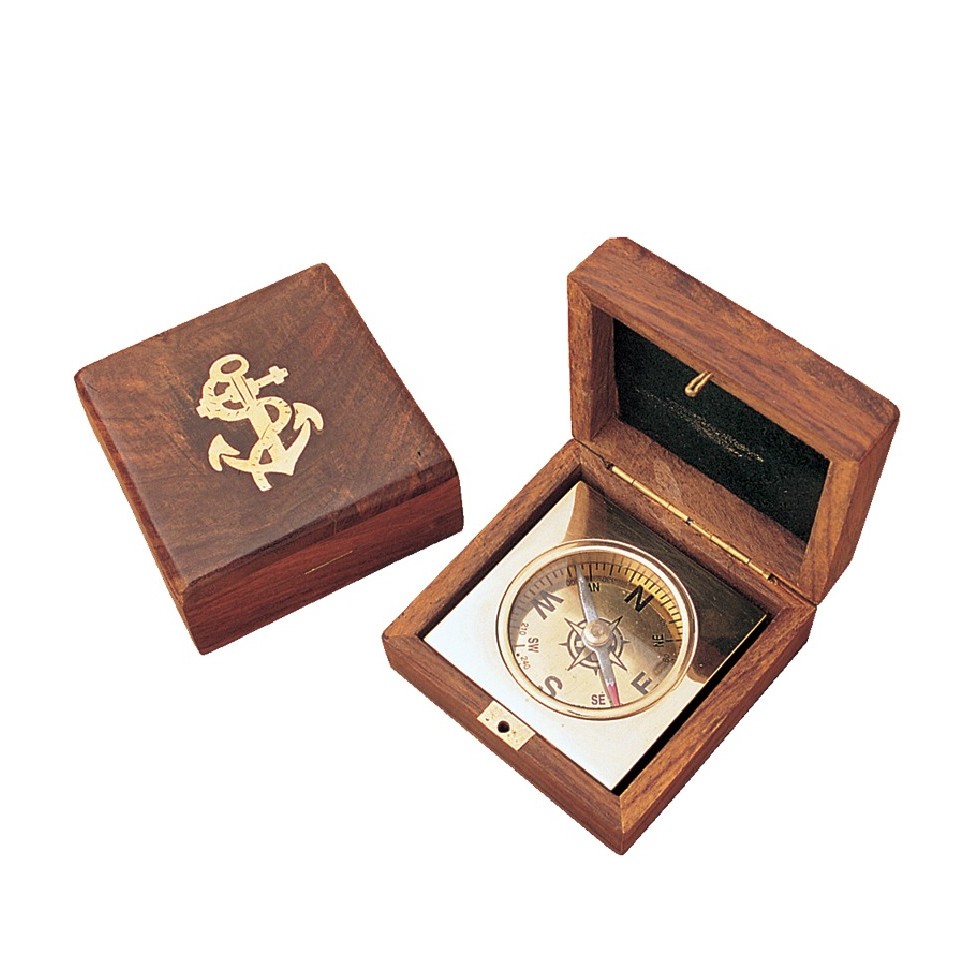

| Los pedidos realizados el día 25 de Julio, se procesarán el día 26 por fiesta local. |


Brass compass with dial mounted in an acacia wooden box with anchor motif.
The compass (from the Latin "passus" ("step")) opened up the world to exploration and discovery. The principle of the magnetic needle was already known to the Chinese in the 3rd century BC and was first used by feng shui priests to tell them where and how to build. It was adapted to maritime navigation by Chinese sailors around the year 1000. The first compasses comprised a magnetic needle floating in a bowl of water, with the needle suspended on a thread or threaded through a reed. The Arabs perfected this by mounting the needle on a pivot. The compass arrived in Europe between the 10th and 11th centuries, enabling sailers to cross the oceans and explorers to discover the continents. The first instrument to resemble the modern compass is attributed to Portuguese citizen Ferrande (1483).
Brass compass with dial mounted in a acacia wood box with anchor motif.
The compass opened the world of exploration and discoveries. The first compass consisted of a container filled with water in which a magnetic needle floated suspended from a thread or threaded through a reed. The Arabs perfect it by mounting it on an axis. It arrives in Europe between the 10th and 11th centuries, allowing navigators to cross the oceans...
Nautical style wooden clock decorated with a marine sailboat. It is made of wood and it works with 1 AA battery which is not included.
Nautical compass reproduction in brass and acacia wood base.
This elegant IMEX Marine barometer analyses pressure variations allowing it to predict the weather.
Antiqued brass compass with lovely compass rose. Comes with navy blue velvet bag.
Reproduction of a compass-sundial in aged brass of the type that Christopher Columbus would have used.